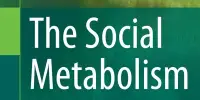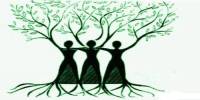People go out at night to mingle, consume alcohol, and enjoy themselves. Sadly, this frequently results in violent conduct in our towns and city centers. Very nothing is known about the circumstances that give rise to such violence.
We set out to explore some of the possible explanations of night-time violence using data on Cardiff city center footfall (the number of people in the city center) and assault-related attendances at the nearby University Hospital of Wales. We discovered that one of the causes of rises in violence at night may be a breakdown in the unwritten rules of queuing.
When people assemble to have fun at night, they frequently drink alcohol and may use drugs. This often distinguishes the activity from other gathering places, such as transit hubs or locations for other commercial activities like shopping.
Whether it’s clubbing or going to the bar, people are drawn to nighttime situations because of the numerous social opportunities they offer. So, while entertainment venues compete with one another for customers, they also market together to draw customers from near and far.
The relationship between footfall and assault related injuries
Many studies have been conducted to determine what influences nighttime violence in urban areas. The fact that there is a higher likelihood of assaults taking place in a location with more foot traffic is one of the obvious warning signs of risk.
Crowding and noise are associated with increases in violence in city centers at night. And, in Australia, it has been shown that when trading hours are restricted there is a decrease in violence.
But our research shows the correlation between footfall and assault is not linear. In other words, increasing foot traffic does not simply result in an increase in assaults. As there is a more complex link between these two variables, we chose to look into possible explanations.
Queue etiquette
We specifically took into account the impact that intoxication plays in how people collaborate, such as when queuing. Queues are a societal reaction to the rivalry for a resource, whether it be a cab, a pint of beer, or admittance into a nightclub.
The people in line, however, have expectations about how others should behave, such as not cutting to the front, because queuing is a social phenomena.
When one of those unwritten norms is broken, those queuing politely will attempt to protect the order of the queue, with the loudest objections coming from those closest to where the offender jumps into the line. Although even those ahead of the intrusion may also react to the injustice.
However, whether there’s a queue violation or not, waiting in line makes people stressed. This increases the longer they believe they have been waiting. In turn, such stress can lead to aggression.
We created a mathematical model to forecast what would occur in a number of night-time circumstances in order to better understand the role queues play in the relationship between footfall and assault.
We assumed the average arrival time of people into a queue is constant. In addition, we assumed that the pace at which servers, such as bartenders, taxi drivers, or other service providers, serve customers and remove them from the queue is constant but varies with the number of servers.
We also made adjustments to the models to account for a number of additional variables, including the weather, bank holidays, and whether or not the Principality Stadium in Cardiff was hosting any Six Nations or other international rugby matches.
The frequency of assaults reported in the hospital’s accident and emergency department and the population in the city center were shown to be significantly correlated. Our queuing models revealed a link between foot traffic and assaults that performed better than a straightforward linear relationship. This is why doubling footfall does not double assaults.
In addition, our analysis indicated that there was more violence during occasions like bank holidays and rugby games than might be predicted from the effect of foot traffic alone. The likelihood of assaults was similarly enhanced by warmer weather, but additional rain had little noticeable impact.
Cutting city center violence
According to our mathematical models, cutting back on waiting time also reduces stress and any associated aggression. The average waiting time drops dramatically as the number of servers increases. As a result, there is more rivalry for space in lines when establishments like pubs, taxi services, or others are understaffed.
The UK Licensing Act 2003 places a duty on licensed premises to prevent crime and disorder and to maintain public safety. Yet, there are no guidelines about how permitted activity should grow as the number of customers grows.
If additional study supports our findings, it will be necessary to examine how nighttime services are designed and run in places where crowds of partygoers could congregate, such as fast food restaurants and taxi ranks, in addition to bars.
















